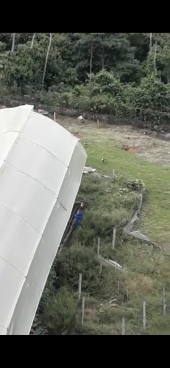Eric, I realize you're teaching "US history", so you may feel you can't get away with this:
1. Was your land ever commercially farmed? Is there an area of your land where you can collect an "unimproved" soil sample?
2. Can you discretely get a soil sample from a local commercially farmed land where you know yucky stuff is still currently being used?
3. Take a soil sample from under a several year old wood-chip bed.
4. Can you find anyone with a *really* good microscope, particularly one that can take pictures? Maybe a local college?
If you can, you could maybe spend 10 minutes briefly describing the "history" of your land - and show how it compares to nearby land. You might not see any fast change in attitude, but you could suggest they try a similar experiment on an area of their parent's properties and who knows where it might lead. A little information about how much those 'cides cost vs the cost of wood chips and polyculture would also help - that's the argument Greg Judy makes.
In the meantime, I'm sending you a shower - a virtual shower of organically grown flower petals!








